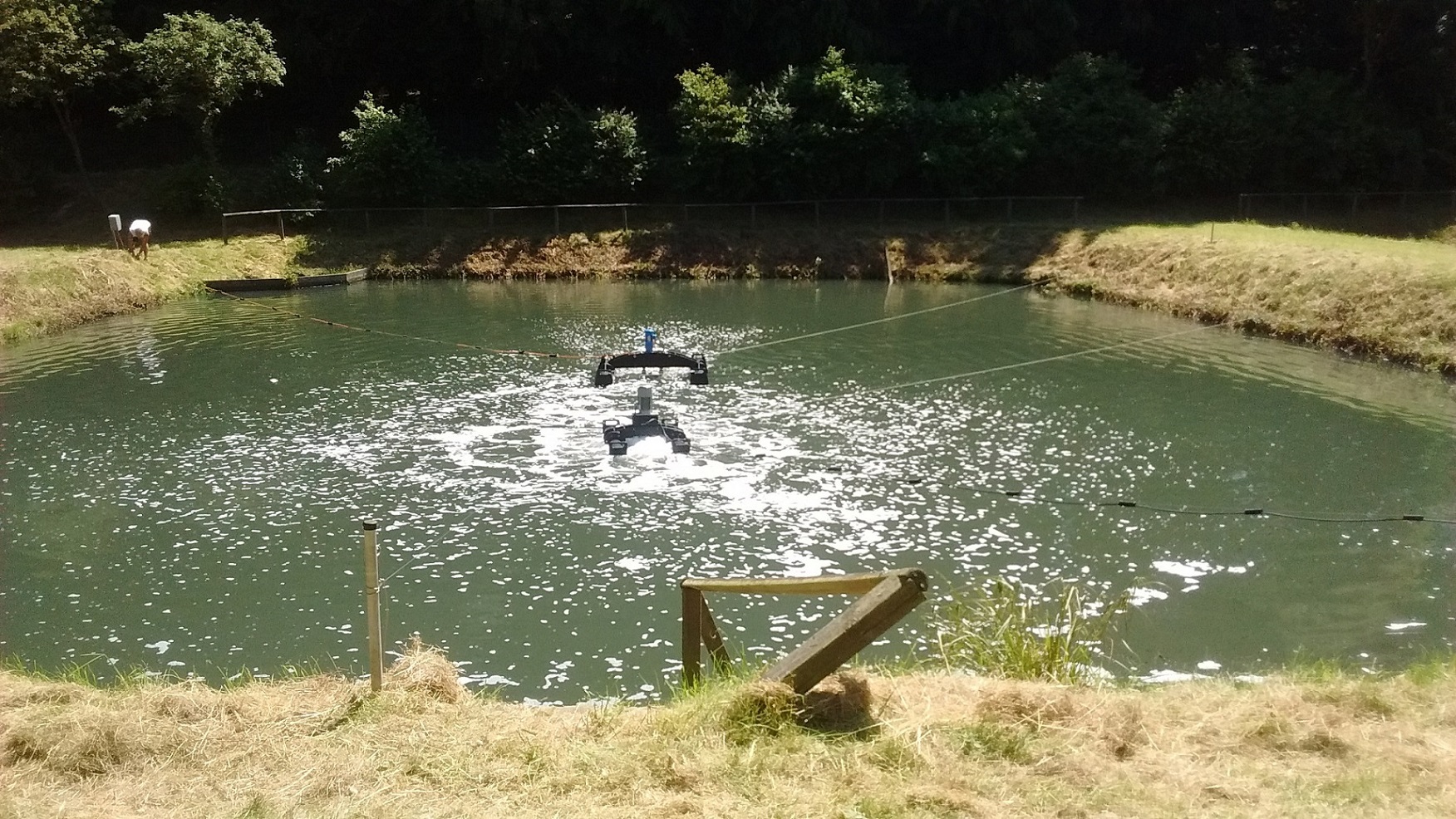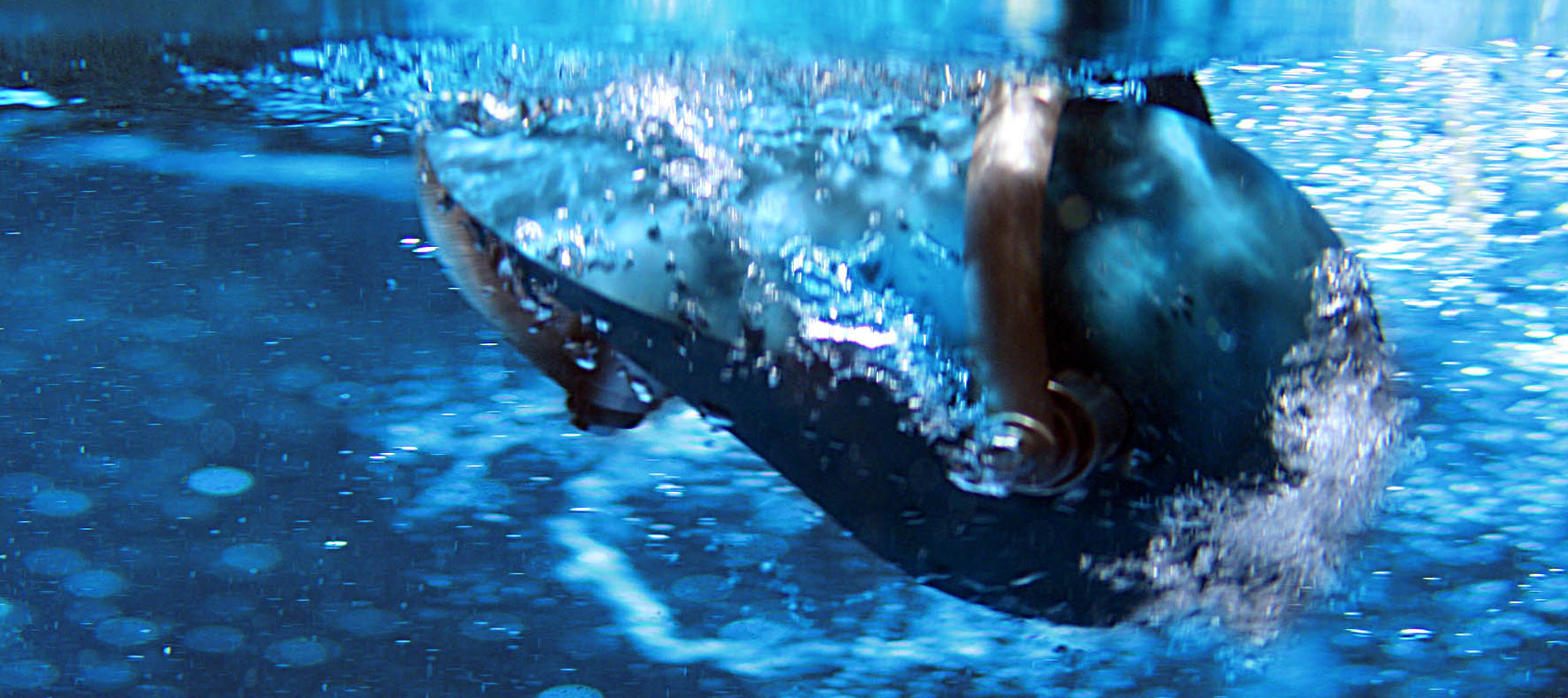The main problems described in pond water treatment plants are summarize here and how these can be overcome with the help of the OLOID technology.
The main problem with pond water treatment plants is insufficient cleaning performance. This can have a number of reasons, for example, washed microorganisms, so that subsequently the organic load can not be degraded. Often, however, there is insufficient oxygen distribution in the pond in which can even form dead zones.
In aerated ponds the OLOID ensures by sending out impulse-like movements of water for optimal circulation and for a homogeneous distribution of the atmospheric oxygen taken in from conventional aeration systems (fine-bubble pressure aeration, injection aeration, rotor ventilation, turbine aeration, jet aerator).
In addition, the generation of waves and ensuing undulation of the pond surface, and thus increase the effective water surface, the O2 transfer by diffusion across the interface air / water is enlarged.
Thus aeration performance may be reduced and operating costs can be cut. This points to the second major problem of pond water treatment plants, the high operating costs due to the operation of aerators. By combining the Oloid technology with conventional aerating systems the operating time of the aerator can be reduced or a portion of the aerator can be completely taken out of service while degradation performance is maintained or even improved. Therefore operating costs may be reduced.
The third problem relates to common downstream polishing ponds to further improve the flow values. Through long operation a sludge layer develops at the bottom, which can result in poor oxygen supply to the redissolution of nutrients and thereby increasingly promoting duckweed growth. Through the flow emanating from Oloid duckweed growth is successfully mitigated or even prevented.
The last problem relates to some climates where ponds can freeze in winter. Through continuous flow and circulation of the water a complete freezing of the pond is prevented, thus ensuring a permanent oxygen supply and an additional superior ventilation after winter becomes unnecessary.
A summary of how we can optimise your pond treatment plant can be found in our flyer:

An OLOID in interaction with an aerator on the pond treatment plant in Ruwertal.
For specific questions regarding your application, please contact us via our contact page and send us the questionnaire Ponds / Pond Treatment Plants / Waste Water Reactors:
Factsheets Pond Treatment Plants
OLOID Type 400
Carried out by our partner Wetland in Chile:
In operation for more than 15 years:
OLOID Type 400 and turbine aerators
Carried out by our partner Aguas Latinas Mexico in Mexico:
OLOID Type 600, Type 400 and HydrO2 1000 Aerator
Factsheets Waste Water Treatment Plants
OLOID Type 400
in Switzerland:
OLOID Type 400 and HydrO2 1000 Aerator
Carried out by our partner Saygin engineering in Bangladesh:
OLOID Type 600





